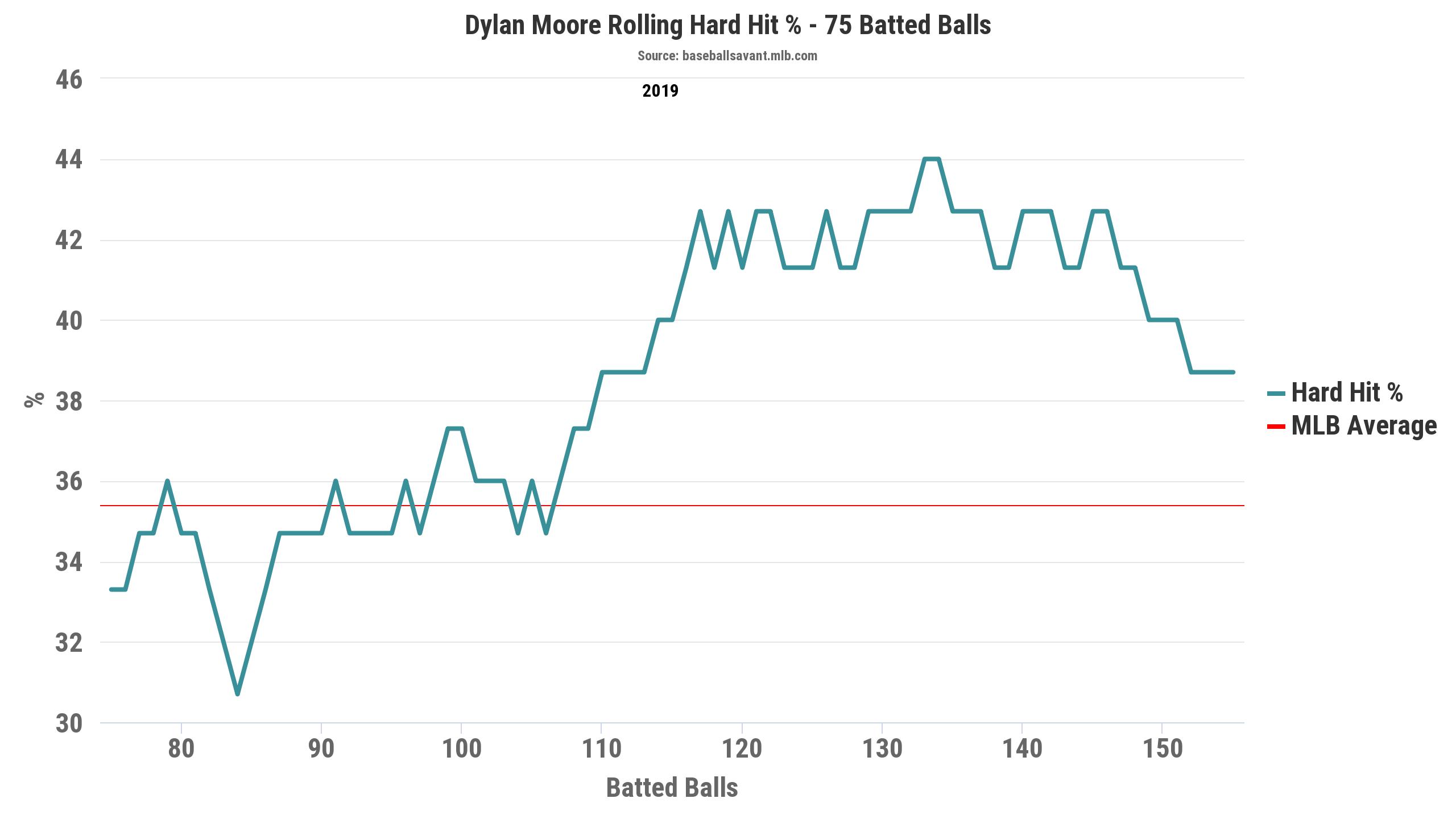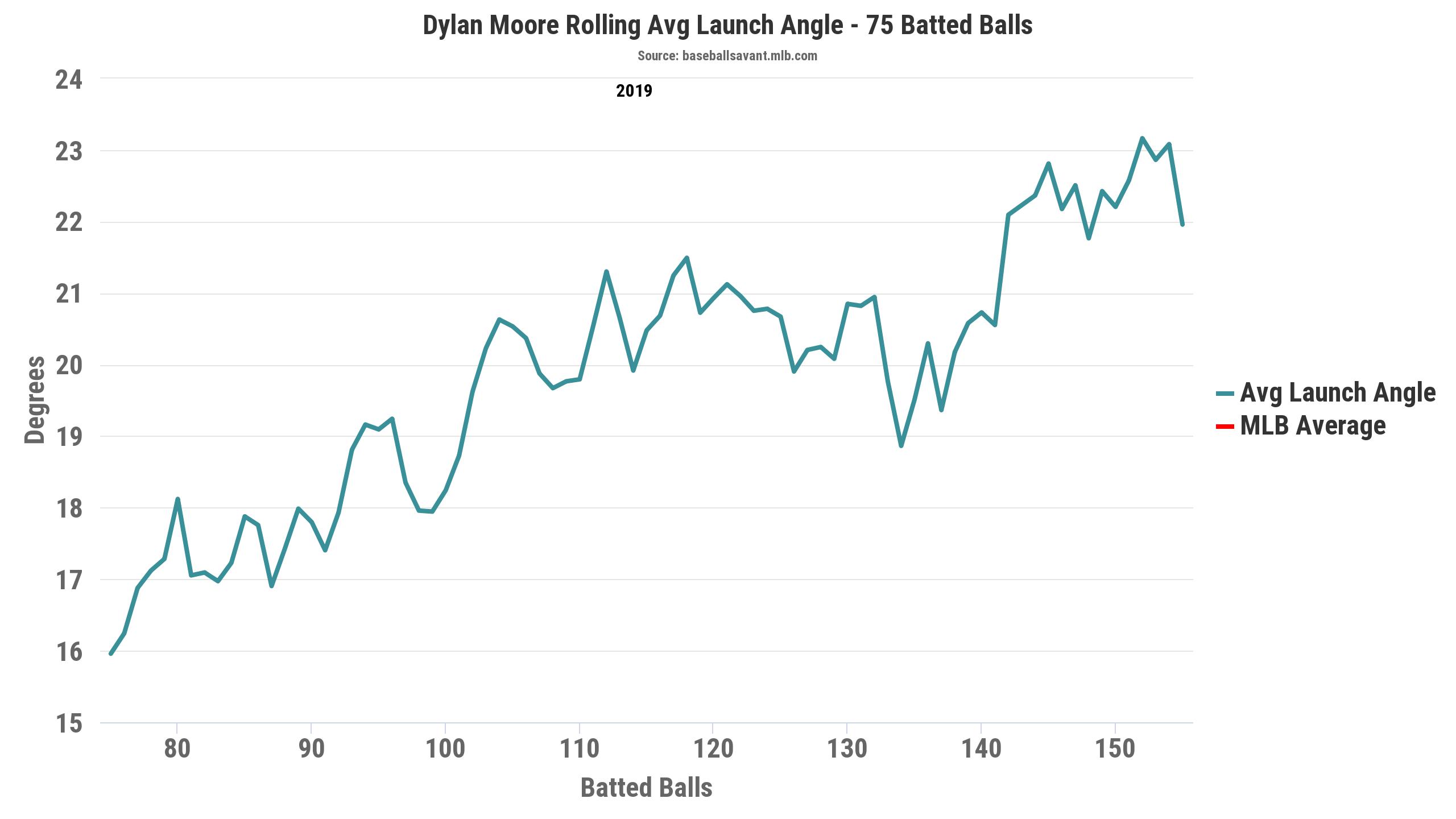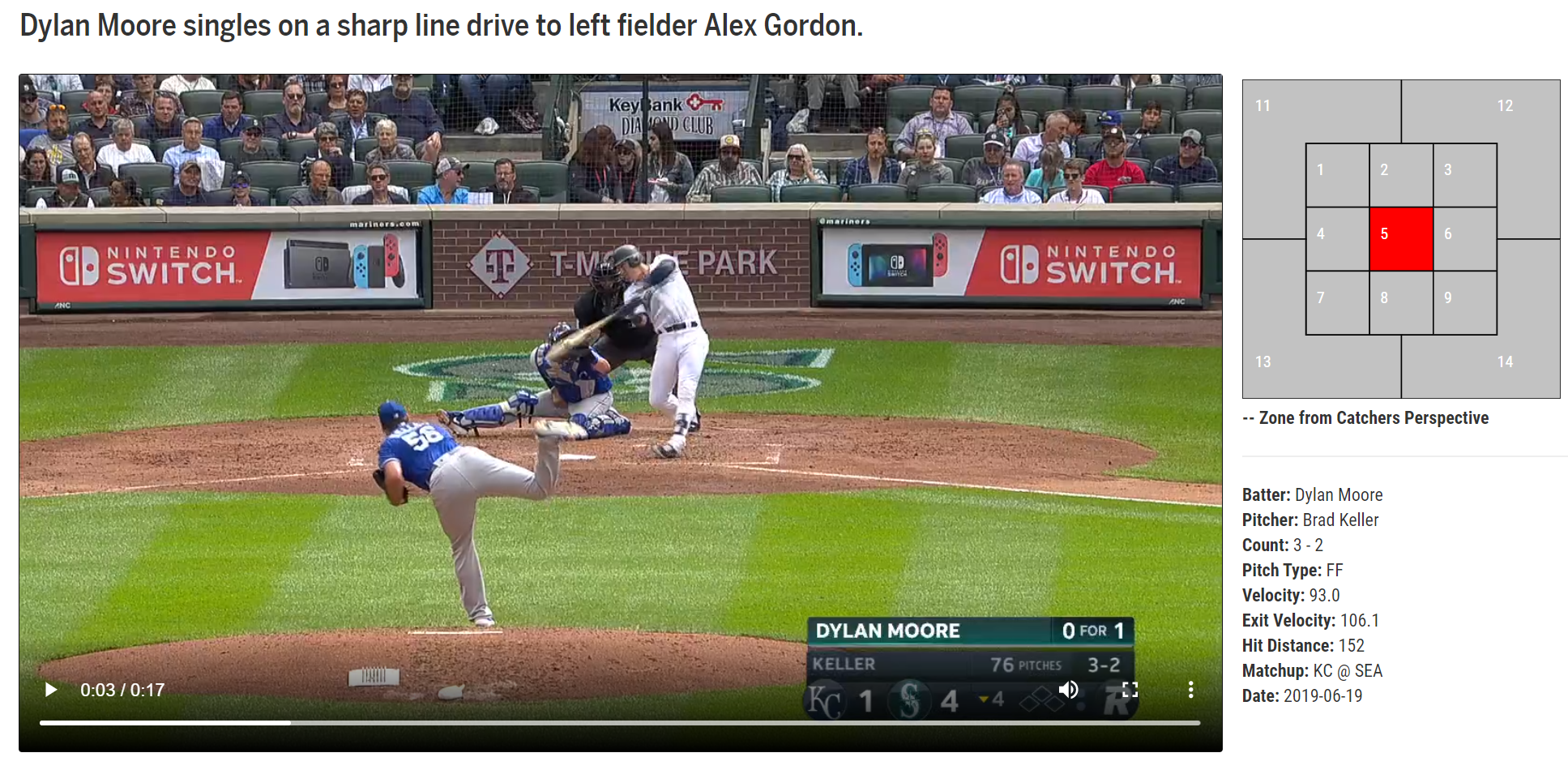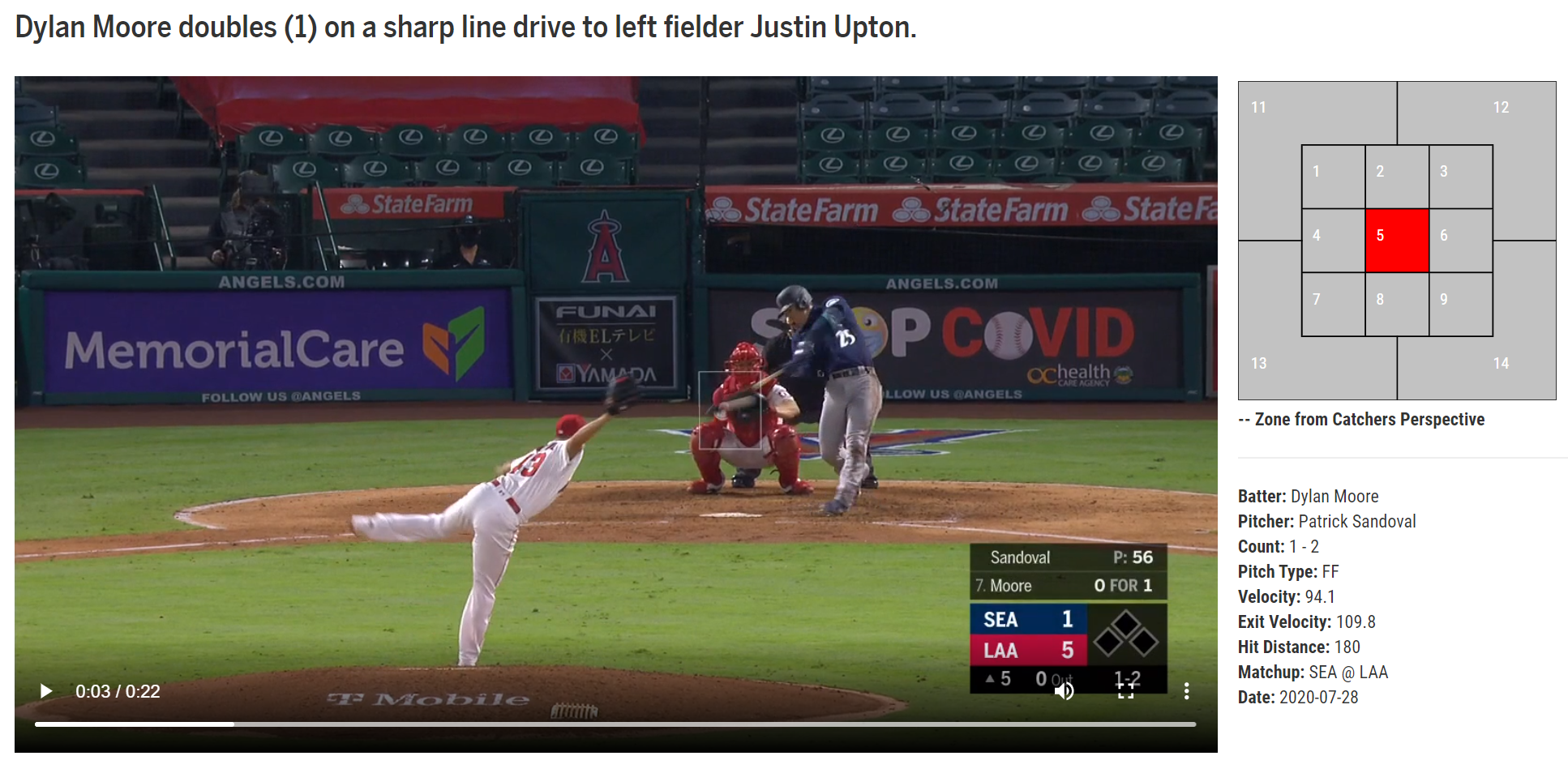The Mariners are fun in 2020. They are currently last in the American League West, but they are still fun. The Mariners should also be fun in 2021, 2022, 2023, and beyond. If everything goes as planned, they will be fun and competitive for the foreseeable future. Stocked with top young talent and payroll flexibility, the organization is set up to be competitive and exciting for years to come. We aren’t quite there yet, however.
Top prospects Jarred Kelenic, Julio Rodriguez, Logan Gilbert, Cal Raleigh, George Kirby, and Noelvi Marte have yet to reach the majors while Evan White, Justin Dunn, Jake Fraley, Kyle Lewis, Justus Sheffield, Tim Lopes, and Shed Long Jr. are only a handful of games into their major league career. Add in a few solid contributors who are signed to reasonable long-term contracts or still under team control through at least 2022 like Marco Gonzales, Yusei Kikuchi, Mitch Haniger, Mallex Smith, Tom Murphy, Daniel Vogelbach, J.P. Crawford, and Austin Nola and all of a sudden we have a list of 20+ players under contract or team control that are expected to make solid contributions to the big league club by the 2021 season.
I almost forgot to mention the team’s first-round pick in 2020, Emerson Hancock, who projects as a top of the rotation starter and has drawn comparisons to Justin Verlander. He could make his debut by 2022. There’s a lot to be excited about in Seattle.
For those of you counting along, I just listed off 16 position players expected to contribute to the success of the Seattle Mariners franchise, and none of them were named Dylan Moore. We won’t find Moore on any top prospect lists as he’s made his way through four organizations since being drafted in the 7th round in 2015 by the Rangers. After hitting .206/.302/.389 with a 33% strikeout rate over his first 282 major league plate appearances in 2019, most didn’t even see a spot for him on the rebuilding 2020 squad.
Despite all of this, the 28-year-old utility-man has been a staple at the top of the Mariners’ lineup in 2020 while Jake Fraley has been kept at the alternate training site and Daniel Vogelbach, Evan White, and Shed Long Jr. have been pushed to the bottom third of the order. This alone should raise some eyebrows. Let’s take a closer look.
Adjustments in 2019
Dylan Moore had a rough 2019 as he was first introduced to major league pitching. He spent the year making adjustments to his approach and swing mechanics which led to inconsistent and poor overall results. Moore did flash some nice power and an all-fields approach, but his inability to make hard contact and avoid the strikeout left much to be desired. If we go back and look through Moore’s stance and swing approach in 2019, we will notice that he was making adjustments throughout the season.
Adjusting to the way you are being pitched through a season as a hitter is great! Adjusting your hitting mechanics through your first major league season, however, is not ideal.
Moore was also forced to navigate other challenges in 2019 as well. He received inconsistent playing time when he was used to playing every day in the minors which requires a change in mindset and preparation as a player. Dylan was asked to play every outfield and infield position (every spot except catcher–he even pitched an inning!) with the Mariners in 2019 after logging only 12 starts in his minor league career in the outfield. In 2019, Moore appeared in the outfield in 46 of his 113 games. Finally, he was forced to the injured list in May of 2019 after a hit-by-pitch on his wrist which didn’t help his situation.
I won’t go too far into the adjustments Moore made through 2019, but he tinkered with this stance and swing mechanics enough that it was easily noticeable when scrolling through his video library. He moved from a slight crouch to a more upright stance, adjusted where he held his hands and bat pre-swing, and experimented with a high leg kick, a medium leg kick, and a toe tap to assist with his timing. After settling in at the plate, Moore appeared to find his stride in the second half as he showed sustained improvements in hard-hit rate, and average launch angle although he still struggled to make consistent contact.


Offseason Changes
Moore continued to make adjustments through the offseason heading into the 2020 season. He settled on a medium leg kick and upright stance with the bat off his shoulder for his pre-swing mechanics and moved his focus to a few other areas.
First, Moore worked to fix the holes in his swing that were generating a whiff-rate of 28.3% against the league-average of 24.4%. He was quoted in the Seattle Times saying, “It’s a lot of hard work that I put in the offseason and to try and get better at what I wasn’t good at. I learned a lot last year and kind of wanted to just improve on everything that I learned last year.” Specifically, he expanded on his swing adjustment to, “create more consistent contact and more room for error in my swing — more contact points. Creating less swing and miss.”
Additionally, Moore looks like he bulked up a little over the offseason to add some power while re-evaluating his approach at the plate. More on this in a minute.
Pre-swing mechanics–check. Swing mechanics–check. Time to prepare for more innings in the outfield–check. Conditioning and training to add power–check. A new approach at the plate–check.
Now, let’s see how these changes have shown up in 2020.
Results in 2020
Mechanics
I watched all of Dylan Moore’s plate appearances so far in 2020 and he’s been consistent with his stance and leg kick. This is a good sign that he’s not working through those adjustments and feels comfortable and confident at the dish. As for his actual swing, it looks like he’s getting some better extension and has moved away from the two-handed follow-through that he used previously. Here are similar pitches and results from year-to-year. Notice the extension and alignment in Moore’s swing this year.


Power
Although we are looking at small sample sizes, we have some really clear indicators that the power he is showing in 2020 is real. Moore had 155 batted balls in 2019, and has 36 so far in 2020 heading into Saturday. Even with less than a quarter of the opportunities, Dylan Moore has managed to hit the ball harder than he did in any of his batted balls in 2019 three times so far in 2020. This has been covered by a few others who have looked into Moore’s 2020 results, but it absolutely deserves all the attention. Max exit velocity improvements are directly related to power gains that stick, so this is a huge deal.

Approach
On top of all of these other adjustments, possibly the most important one that will help Dylan Moore take that next step to solidify himself as a regular contributor at the major league level has been his new approach at the plate. Moore has dramatically cut back on his zone swing rate in 2020 from a near-league-average rate of 64.6% in 2019 to 54.6% in 2020. The biggest contributor to this decrease in zone swings has been on offspeed pitches.
| Pitch Type | 2019 | 2020 |
|---|---|---|
| Fastballs | 73.0% | 65.8% |
| Breaking | 71.8% | 50.0% |
| Offspeed | 43.8% | 37.5% |
| Overall | 64.6% | 54.6% |
What does this mean? Moore is looking for his pitch and doing his best to lay off when it’s not what he’s looking for–even if it’s a strike. This approach is common among some of the best hitters in the game and has become more popular with the swing reinventions that came with the fly-ball revolution. Look for your pitch and give your “A-swing” when you get it–or at least when you think you’re getting it.
I’ve seen doubters say that he is sitting dead-red and will fall off when he stops getting fastballs. This is a fair point, as nearly all of Moore’s damage has been done on the fastball this year with a .529 wOBA backed by a .559 xwOBA, which shows that the damage he is doing isn’t a result of luck or small sample sizes. His whiff rates on offspeed pitches are very bad.
I am optimistic that Moore is sitting on fastballs by choice rather than out of necessity, however. Dylan put up a strikeout rate below 20% at every single stop in the minor leagues, and while advanced data may not be available for those games, it indicates that he isn’t a fastball-only hitter. In my opinion, he’s choosing to sit on fastballs because he can and because they are the easiest pitches to square up. If you’re getting them, why not sit on them?
Will opposing pitchers adjust? Yes, of course. However, if Dylan has the eye to lay off offspeed and breaking balls, and I trust that he will adjust his approach to look offspeed when needed, right now there’s not much of a reason to do that. There aren’t many pitchers out there who can consistently throw their secondary pitches for strikes, and Moore has demonstrated the ability to lay off on pitches out of the zone with his new approach. His 20.9% chase rate is well below the league average of 28.2%, and there are countless successful hitters who have made a successful career off crushing fastballs.
Another result of the more selective approach that he is deploying this year is fewer weakly hit and foul balls. Foul balls are often a product of “waste” swings, where the batter fouls off the pitch because their timing or spin identification is off. The approach of using your “A-swing” naturally increases whiffs, while decreasing fouls and weakly hit balls. This is actually a viable approach for batters in non-two-strike counts. While the batter may whiff on their swing, they often get another chance compared to making weak contact that results in an easy out.
| Overall | < 2 Strikes | |
|---|---|---|
| 2019 | 18.2% | 11.3% |
| 2020 | 14.3% | 8.0% |
| League Average | 17.0% | 10.5% |
| Hard Hit% | Barrel% | |
|---|---|---|
| 2019 | 36.7% | 6.5% |
| 2020 | 55.6% | 19.4% |
| League Average | 34.7% | 6.3% |
The key here is having a two-strike approach that helps reduce strikeouts, which Moore does not currently seem to have. I see this as one of the final adjustments needed to solidify Dylan Moore as a true offensive threat. Here’s an example of Moore using his current approach in a two-strike situation:
https://gfycat.com/repentantfemaledonkey
Outlook
Dylan Moore should have a nice career as a late-bloomer. He can play nearly every position at the major league level and deliver above average results in the box. I believe that Moore will continue to find playing time on the Mariners as they grow into a contender over the next few years. I see him as a true “super-utility” player who can deliver everything we’ve been hoping for from a guy like Sean Kingery. His swing and approach remind me a lot of Michael Young. Although he doesn’t make quite as much contact, his all-fields approach, power/speed mix, and ability to play multiple positions compare nicely to Young.
For fantasy, I think Moore has a few 20/10/.270 seasons in him, and he could push that a little higher over the next few seasons with a ceiling of 25/15/.280. I see his strikeout rate continuing to drop below the league average, considering his high zone-contact rate and ability to lay off pitches outside the zone. Moore’s walk rate should increase as well, considering his selective approach. He seems very motivated to run with five stolen bases already in 2020, so he should be able to produce double-digit thefts for a few more years as well. Add in the position flexibility and hitting in a prime spot in a lineup that has the ability to score runs in bunches, and you have a solid fantasy contributor. Playing time will be the biggest challenge as some of these top prospects get promoted, but we all know injuries are always looming, and a super-utility player who can hit will tend to find his way into the lineup one way or another.
Bottom line: I’m buying into Dylan Moore for the rest of 2020 and beyond. He should be an above-average contributor in real life and fantasy for the next 3-5 years, and I imagine he will be underrated for some time due to his “utility” label, non-prospect status, and the lower level of media attention the Mariners receive. Dylan Moore will keep on keepin’ on.
Featured image by Justin Paradis (@freshmeatcomm on Twitter)

Chet, the profile seems very similar to Nick Solak. I guess over the next few years which one of the two would you be targeting.
Hey Chris, thanks for reading and thanks for the question! I like them both for now but they each have adjustments they can make to take them to the next level. Moore needs a better 2-strike approach. Solak is making a ton of contact and has slightly better plate discipline but he isn’t hitting the ball with authority as much.
I’d like to see Solak deploy an even more selective approach and focus on driving his pitch rather than hitting everything in the zone.
In 2020 so far Moore has the edge in max EV which is a good indication of future power. Honestly, I like them both quite a bit! They are both fast and willing to run which is a plus as well.